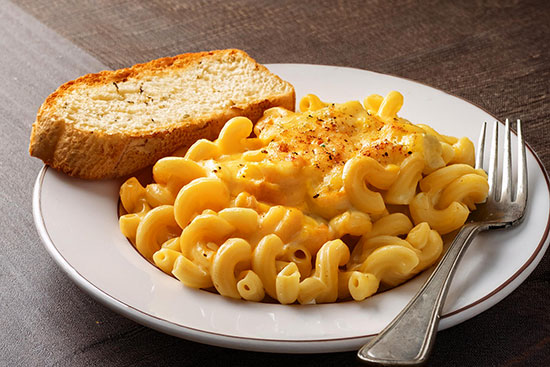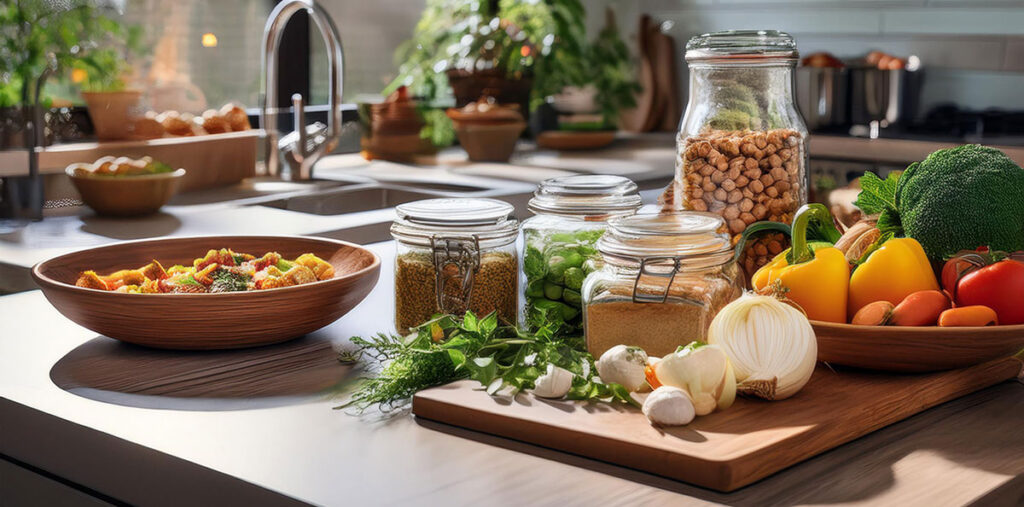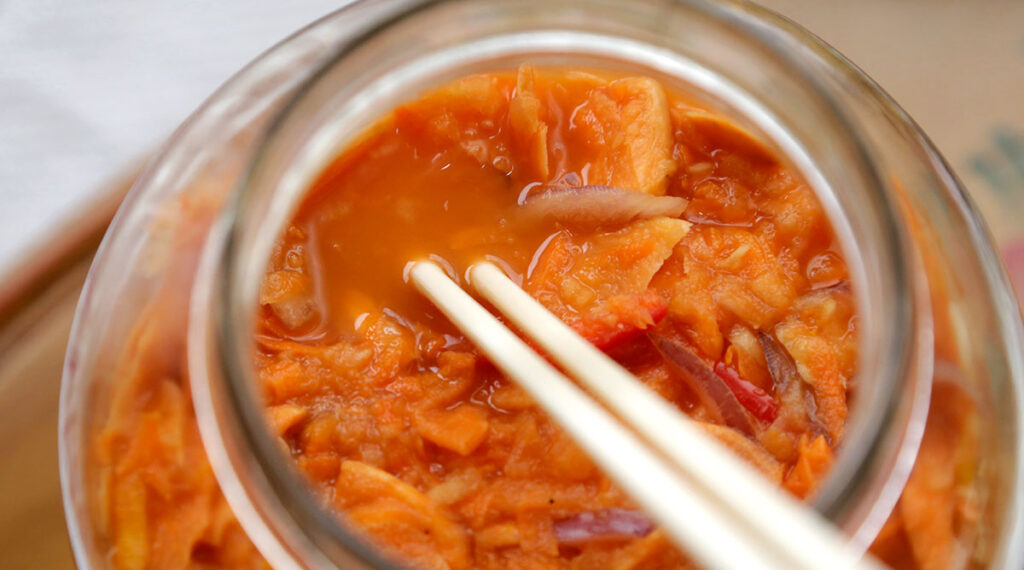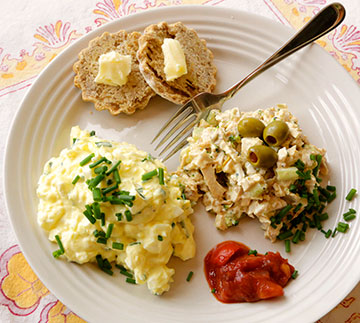You can save money on a gluten-free diet and eat healthily too! Groceries are more expensive everywhere you live in North America these days, whether you are on a special diet for health reasons or not.
As someone who tries to manage to make healthy meals for my family, who are gluten-free through necessity, it has been a goal to find ways to shop and save over the years.
First, let me mention that at one time when we were really short of funds, before our gluten-free diagnosis, we lived for a while suffering from brain fog and other symptoms, somewhat different for us all, on Kraft dinner. Back then, before finding out what was doing it to us, living in a kind of stupor felt normal. Was there another way to feel? After going gluten-free (it took a while, though), the stupor left, as well as a degree of constant pain and a low level of continual brain fog.

Kraft Dinner was tasty, cheap, and fast. I can still taste the characteristic flavor. Sure, it was not as healthy as homemade macaroni and lots of real cheese, but it has a sort of umami taste you want more of. It was a quick meal, for sure.
Back then, a package only cost $.99, and a loaf of bread was about the same price. Toast and jam for breakfast, an apple for lunch, and for supper, Kraft Dinner with bread and mayonnaise, and you were living! Thankfully, those lean times didn’t last forever!
Every now and then, I still make a version of my own gluten-free macaroni and cheese to have that comfort food again. You can use store-bought gluten-free pasta or make your own. It is the sauce that makes it great.
Basic Recipe for Macaroni and Cheese:
Lots of real cheddar cheese (grated), whole milk, butter, salt, and black pepper, with a dash of cayenne pepper and a good dollop of mustard. Stir in a thickener such as cornstarch, potato starch, or Trina’s Flour Mix #3. Place some cooked (GF) pasta in a buttered casserole dish and pour on the sauce. Top with some more grated cheese; I like a mixture of white cheddar and mozzarella. Yummy! Then pop the whole casserole in the oven for about 30 minutes at 350℉ until it bubbles and the top cheese starts to brown a little.
So, what can you do to save some money and eat healthily?
Start by listing all the naturally gluten-free whole foods you like to eat. You can find lists and lists of safe, naturally gluten-free foods online, so I won’t list them all here. You can get my cookbook if you want to; here is a link, and the table of contents is at the bottom of the page. Gluten-Free, You Can Do It.
Shopping Tips

- Shop around the outer aisle of your grocery store first. Look for “unprocessed foods.”
- fresh vegetables,
- meat with no additives,
- fruits,
- white and sweet potatoes,
- brown, red, black, and white rice,
- gluten-free pasta,
- plain tinned or dry beans, lentils, etc. Some tinned bean Chili Con Carne and Boston-style brown beans are also gluten-free; check the labels. These are heat and serve, and often, the not-fancy ones are reasonably priced.
- milk, butter, cream, yogurt, and, in other words, real dairy, eggs, and cheeses are also available.
- basic condiments like pickles, olives, salt, pepper, and spices have been processed to remain gluten-free, and some have not. There are a host of choices, but you must read the labels.
Combining single ingredient foods in a meal or recipe means you are getting less processed food and more naturally whole foods in your diet. There’s no long list of things that your grandmother would never have used. Whether on a gluten-free or other diet, cooking and baking with single ingredient foods that you combine yourself, is better for you.
Buy Staple Items in Bulk
It can cost more initially to buy in bulk, but in the long run, it will save you money. Ensure that bulk items last long enough for your needs so you don’t have to pitch them before the due dates. Rice and dry beans, for instance, will last years when stored properly.
Purchasing gluten-free staples in bulk, such as rice, quinoa, beans, nuts, and seeds, is a wholesome idea. Oatmeal is a naturally gluten-free grain (if you can tolerate oats), but it needs to be certified gluten-free due to often being processed on the same equipment as gluten-containing grains.
Buckwheat groats, or flour, fall in the same category; they must be certified gluten-free since they are often processed in wheat mills. Buckwheat is a seed akin to rhubarb and does not contain gluten. It is a nutritious alternative to wheat flour. Buying buckwheat in bulk can be more cost-effective.
- Tinned goods like tuna fish, salmon, and beans are excellent to keep in your cupboards for more extended storage and can help you make easy meals. When they go on sale, buy more to stock up.
- Unprocessed frozen foods are also a good choice. Certain staples, like fish, are less expensive in season; they are frozen right after being caught to ensure freshness. Always read the labels as frozen meats and fish often are breaded.
Join a gluten-free community and share the bulk items.
Cook more at home.
Learn to cook tasty home-cooked meals. Share the cooking with someone else in your home, or find another person in your circle of friends who also needs to eat gluten-free and trade home-cooked meals.
Make cooking festive. Invite some friends, and have a meal prep party. Or have a cook-ahead-for-the-freezer party and share the food for each other’s home. This can work particularly well when you are either living alone or the only family member who requires gluten-free foods. Sanitizing a kitchen and cleaning will save you time, too, since you use the same utensils, etc.
Plan healthy meals around whole foods.
Make Condiments and Fermented Vegetables, such as Sauerkraut, Kimchi, and others at home. Each week, have a meal planning and cook-ahead day. Organize items in food prep containers that can be used to provide more variety and save time.
Cook like a chef with “mise en place” or “set up” ready-to-use items.
The practice of using a system of “mise en place” means you meal plan your basic meals in a menu for the week. Then, you wash, cut, chop, marinate, and pre-cook and refrigerate many of the ingredients to save you time. You will be able to assemble a variety of meals in minutes.
- A few “mise en place” tips.
- Always label your containers with the date prepared to keep track of freshness. (you can write on glass with a black marker, and it will wash off)
- use separate containers with tight-fitting lids to store foods safely.
- avoid cross-contamination while prepping different foods using different utensils, knives, whisks, spoons, etc., and cutting boards for different ingredients.
- If preparing both gluten-containing and gluten-free foods, use separate gluten-free food prep areas (if one person is prepping both, sanitize and do the gluten-free ones first). Always use separate utensils and food prep items for gluten-free best practices.
- Store prepped items you will use during the week in the front of your fridge for easy access and to remind you to use them.

Fresh foods you can refrigerate for a few days to a week for “mise en place.”
- Choose which to make for your week’s menu, not all at once.
- To assure food safety, always store fresh foods properly, and if anything feels the least bit slimy or has an off smell, discard it immediately.
- Chopped onions,
- Grated cheese and cheese combinations
- Diced carrots: Place them in a water bath to store. Carrots keep well and can be used in salads, stews, or as snacks.
- Cook rice beforehand, but be sure to add some salt and butter to the cooking water, increasing its shelf life. Store only for one week in an airtight glass container. Heat serving-size portions in a toaster oven in an oven-safe Ramekin.
- Poached chicken breasts. Slice and use in salads or stir-fries. Or make a chicken breast ready-to-eat salad that you can add to a meal bowl, taco shells, etc. Slice or cube poached chicken and marinate to keep it fresh longer. (Marinade for poached, grilled, or roasted Chicken breasts: Chopped fresh thyme and rosemary leaves (discard stems); fresh garlic, grated; chopped fresh parsley and cilantro; lemon zest and juice; olive oil; salt and pepper, dash cayenne pepper).
- Sliced sweet red, yellow, orange, or green bell peppers. (When peppers are in season, I often buy a basket full at the market, then chop and freeze them to use in stir-fries all winter.
- Sauces you make ahead and freeze.
- Hummus or bean dips.
- Cooked dried bean medleys.
- Boiled and de-shelled whole eggs.
- Vinaigrette: Combine oil, vinegar, mustard, and herbs. It keeps well in a jar, perfect for salads or to drizzle over vegetables.
- Pesto: Make it in a food processor. Fresh Basil, garlic, pine nuts (or walnuts), salt, pepper, and Parmesan. Keep it in a glass jar with a thin layer of olive oil on top to preserve freshness.
Find the whole recipe:
You can see the entire recipe for Chunky Pesto with Pumpkin Seeds and Walnuts and a make-it-ahead and freeze Sweet Potato and Black Bean Casserole Recipe in my newsletter Musings by Trina Astor-Stewart

Condiments that keep longer for “mise en place.”
- I like using condiments that keep well for more than a week; they make meal prep easy.
- Fresh parsley and cilantro pesto with pumpkin seeds.
- Fermented sliced onions
- A fermented medley of sliced onions, red bell peppers, and a jalapeno pepper.
- Frozen Pestos. You can make a variety of pestos and freeze them in small containers. Thaw what you need for that day.
- Fermented vegetables – see recipes here.
- Tahini Sauce: Blend tahini, lemon juice, honey, roasted garlic, salt and pepper to taste.
- Creamy Romesco Sauce: make it in a food processor. 1. Roasted Red Peppers (clean and halve sweet red peppers, coat them with olive oil, and toss. Roast on a parchment paper-lined cookie sheet until just charred and soft. (or buy a jar of already roasted red peppers); Cashews (unsalted); Sun-dried tomatoes; Raw garlic cloves; Vinegar, tinned tomato paste; salt and pepper; Cayenne Pepper (a pinch); Smoked Paprika; Olive oil.
More ideas on meal planning
We all have favorites for everyday meals we make or go to repeatedly. Make a list of meals and snacks you eat more often and on special occasions, then organize meal planning and grocery shopping around these. It will save you from thinking of something when you are hungry and grabbing something for convenience’s sake.
Turn today’s dinner into tomorrow’s lunch or even an entirely new meal. For instance, leftover chicken can become chicken salad or be added to a stir-fry. Save drippings from roasted meats or soup stock from vegetables. Bits of leftovers, as long as they are still within a three-day window of freshness, can serve as a stew or soup fillers. Add tinned beans, fresh veggies, and spices, throw in a fresh potato or already-cooked rice, simmer, and you have a delicious soup.
You can use leftovers creatively to minimize waste. Sometimes, when we have not been able to finish a large salad, I save the rest and add it to a cheese omelet the next day. It’s delicious and nutritious.
Freezing salad is not a good idea, but many vegetables can be frozen to save for another meal, such as a stew, soup, or stir-fry.
Fermenting vegetables also extends their nutritional profile and shelf life. I usually have a good-sized jar of fermented vegetables in my fridge to use for over a month or more. When the jar starts getting empty, I add the juices and the rest to other meals, and this adds a lot of flavor.
Find a Farmer’s Market and buy in-season produce.
Farmer’s markets often sell produce in bulk, which costs less per pound. They also sell items in a boutique manner that is not a saving but is fun. Specialty stores that cater to the gourmet market are usually more expensive, but sometimes, it is worth splurging a bit. That said, sometimes a specialty store can have something gluten-free that is actually quite reasonable and can add to the diversity in your diet.
Remember, variety is the spice of life. Try different things.
Try Gardening to grow some fresh foods in season. Unless you have a farm, you won’t necessarily be able to grow all you want, but a few just-picked foods are so good!
- Green and yellow beans can be easy to grow. Pick and cook. Plant a bunch in spring and then a new batch every few weeks to have some fresh all summer.
- Cherry Tomatoes grow well in a container.
- Get a book on gardening and experiment. You get good food, sunshine, and exercise.
Fast Foods
Packaged foods you buy out of convenience or to save time cost more. Read the labels. Often, the nutritional components are lacking, and there is a long list of unpronounceables that our grandmothers would not have heard of. What are all these things on the list doing? Look them up if you dare and shock yourself.
As someone who must eat gluten-free for health reasons or avoid particular foods for allergic reasons or food sensitivities, it is essential to choose nutrient-dense foods. Of course, we all eat the occasional treat. We have our favorite ice cream place, and since many gluten-free choices exist, we occasionally indulge. When traveling, we often can’t or don’t want to bring food along, so we choose safe restaurants; however, when we can, we bring along something homemade, which saves money.
Saving money is not always of prime importance in life, but choosing when to splurge is also important. There are other ways to save money than just on food. Make a budget and see where you can cut unnecessary expenses.
Save more on non-food items.
Everything is expensive these days. We can all find ways to save a few dollars here and there.
When shopping, do you really need another shirt, blouse, or pair of shoes? If not, that’s fine, but look at the state of your closet first. These days, our closets are larger and more packed with things we don’t wear often or at all. Think of how small your grandparents’ closets were. If you don’t remember, visit a hundred-year-old home or museum in an old house. You will wonder where they put stuff.
Culture in the old days usually allotted more space for food than clothing. They gardened, had root cellars, put food away for winter, and more.
If you don’t have room for a garden, you can still grow microgreens in a couple of Mason-style jars.
Find creative ways to save money and also make some extra cash here and there. Even if you are busy working at a job full time, you can squeeze a little time away for food prep that will save you money and health.
We all need other people. Find new friends or family with a need you may be able to help with and create a win-win trade situation for all of you.
Make gluten-free flour blends from separate ingredients rather than purchasing already blended combinations.
Not every gluten-free baking mix suits everyone. Learn how different gluten-free flours work in recipes. There are gluten-free flours that work for everyday food items. You can use cornstarch to thicken sauces or make a blend that you regularly use for this purpose.
For special foods, baking for holidays, etc., you may need different flour blends. My cookbook, Gluten-Free You Can Do It, is an excellent resource with flour blends that can suit different gluten-free food intolerances.
Try new international recipes for cuisines that naturally use gluten-free ingredients. This can add variety to your meals and help you discover new and exotic dishes. Many cultures naturally eat gluten-free meals most of the time, and the ingredients used are often comparatively inexpensive.
Organize your Cupboards, Fridge, and Freezer.
It is much easier if your household is entirely gluten-free. Those who want something wheat-based can add it. You can also organize your food prep, cupboards, fridge, and freezer so that gluten-free foods are clearly labeled and stored separately.
You can enjoy many naturally gluten-free meals together, but it takes a little planning. When we first discovered our family had to live gluten-free, our social life also changed considerably. Some restaurants cater to many food sensitivities, and you can choose to eat at these places when you are out.
When visiting others or attending potluck-style functions, I have found that you are centered out less by bringing a large, naturally gluten-free item or two that you share with everyone. If you only bring a container for yourself to eat in a corner, or you eat before arriving, you look a little weird, and you shut yourself off from many of the good times in life you would otherwise be enjoying. Sometimes, people who share your food don’t even realize it is gluten-free.
There have been many occasions where the foods I brought disappeared faster than the gluten-full versions. I usually bring a main dish casserole and a dessert since it is less likely to find a gluten-free dessert you can eat. This way, you are assured you have foods you can enjoy. Choose what you bring and augment it with a little salad or fruit you’ve been assured has no gluten-containing dressings.
Following this general rule, you can enjoy being out with people without worry. Socializing is important. Don’t shut yourself off.
Comfort Foods
Think healthy meals with lots of variety, and remember old-fashioned comfort foods. Sometimes, all you have to do is substitute one or two gluten-containing ingredients for non-gluten-containing foods in a recipe.
If you avoid the little packages of already prepared and heavily processed gluten-free foods, you will eat more natural items, and there are ways to save money this way and possibly eat healthier food.
Here are some inexpensive meal suggestions.
- Tuna Rice Casserole:
- Mexican Sweet Potato and Black Bean Casserole: This one is freezable.
- Masa Harina is a staple for making gluten-free tacos inexpensively.
- Red Kidney Bean Chili – you can make a large pot and freeze it in portions.
- Shepherd’s Pie is a delicious and hearty staple everyone loves, and you can make it ahead and freeze it in large or small casserole dishes to heat and serve later.
- Oil, vinegar, salt, and pepper combined is an easy vinaigrette salad dressing to make yourself.
- For a creamy salad dressing: Combine gluten-free mayo with the vinaigrette salad dressing, or add a dollop of yogurt or sour cream.
- Use a small amount of fermented vegetables as a base for a salad. Add sour cream and your other salad items, toss, and serve. Delicious!
Consider making Kefir yourself using Kefir Grains …this is truly a miracle food.
You can make regular Kefir (a fermented milk), which is good for digestion. Kefir can often be tolerated by those who have lactose or casein intolerances. You can make thick yogurt-like Kefir as a sour cream or yogurt substitute at a lower cost. Once you have Kefir grains, you save on every subsequent batch. All you need to buy is the milk or 10% cream.
Whatever ideas you implement to save money on your gluten-free food, often you eat better with whole and natural food choices than buying ready-made. The important thing is to eat well for your long-term health and to enjoy life.




